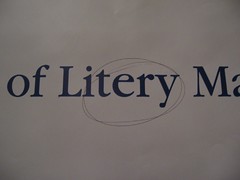Creative Non-Fiction Prize
The Malahat Review, Canada’s premier literary magazine, invites entries from Canadian, American, and overseas authors for its Creative Non-Fiction Prize. One award of $1,000 CAD is given.
2010 Deadline
The deadline for the 2010 Creative Non-Fiction Prize is August 1, 2010 (postmark date).
Guidelines
The entry must be between 2,000 and 3,000 words. Please indicate word count on the first page. Please double space your work.
No restrictions as to subject matter or approach apply. For example, the entry may be personal essay, memoir, cultural criticism, nature writing, or literary journalism.
Entry fee required:
$35 CAD for Canadian entries
$40 US for American entries
$45 US for entries from Mexico and outside North America.
Entrants receive a one-year subscription to The Malahat Review for themselves or a friend.
Entries previously published, accepted, or submitted for publication elsewhere are not eligible.
Entrants’ anonymity is preserved throughout the judging. Contact information (including an email address) should not appear on the submission, but along with the title on an enclosed separate page.
No submissions will be accepted by email.
The winner and finalists will be notified via email.
Entrants will not be notified about the judges’ decisions even if an SASE is enclosed for this purpose.
The winner and finalists will be announced on the Malahat web site, with the publication of the winning entry in The Malahat Review’s Winter 2010 issue, and in Malahat lite, the magazine’s quarterly e-newsletter, in October 2010.
No entries will be returned, even if accompanied by an SASE.
Send entries and enquiries to:
The Malahat Review
University of Victoria
P.O. Box 1700
Stn CSC
Victoria, B.C. V8W 2Y2
Canada
Email: malahat@uvic.ca
Telephone: 250-721-8524
Fax: 250-472-5051
Entrants wishing to pay by credit card may download and complete our Credit Card Payment Form then enclose it with their entries.
Previous Creative Non-Fiction Prize Winners:
2009 Judy Copeland
2008 Joel Yanofsky (Won Silver for Personal Journalism at the 32nd Annual National Magazine Awards)
2007 Vaia Barkas
[Photo: cgkinla]





